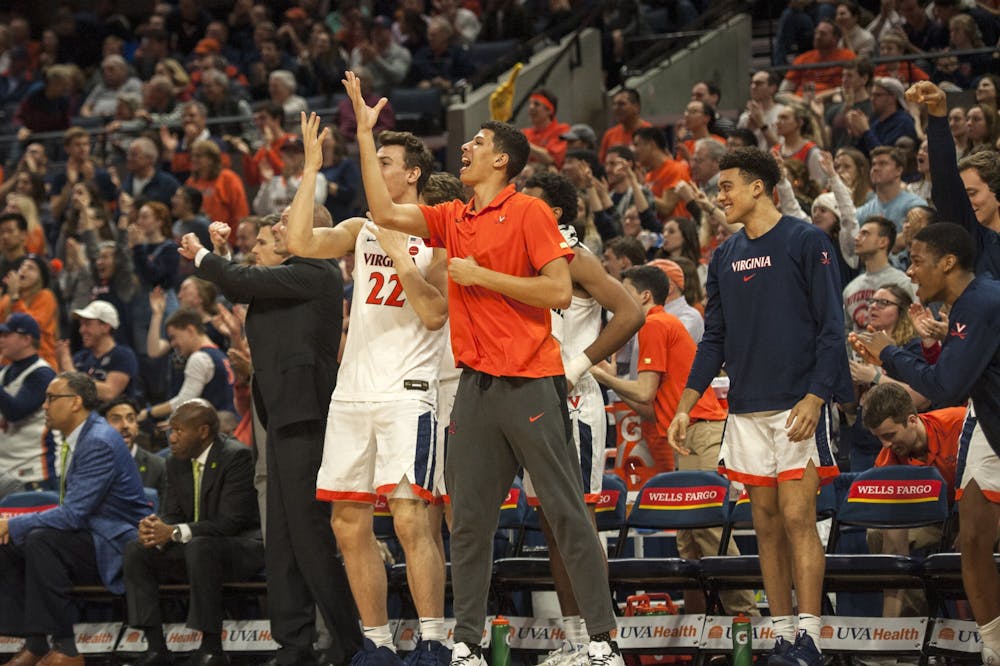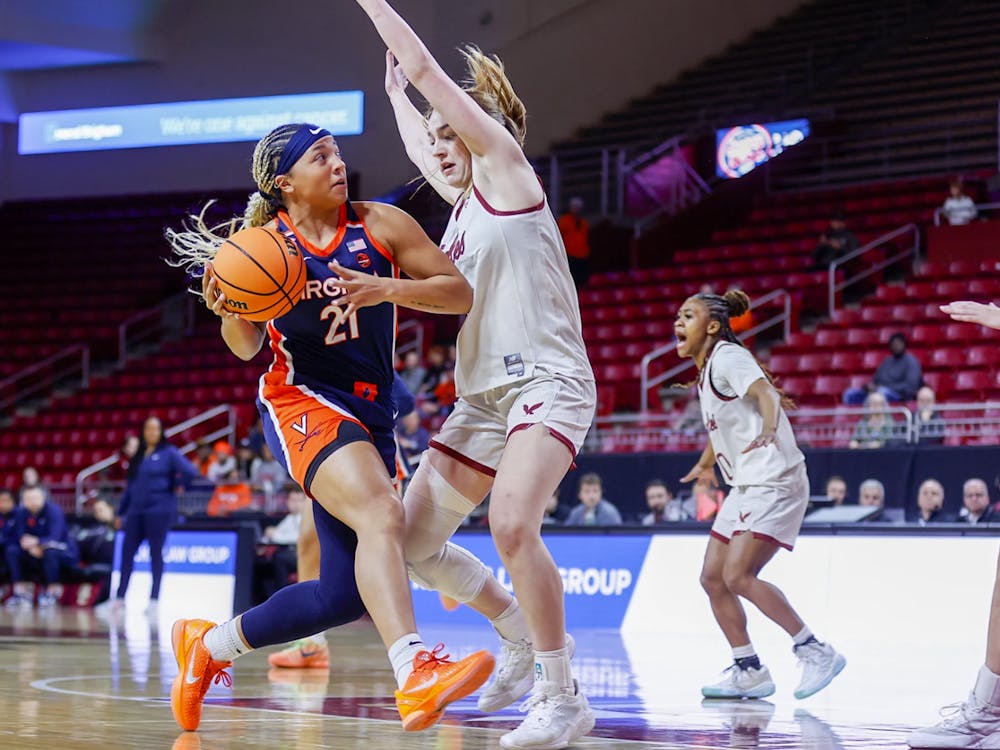The collegiate careers of NCAA Division I athletes are not always straightforward. Many athletes across the country choose to redshirt — the practice of withdrawing from collegiate sporting events for one year, thus extending their playing eligibility by an additional year. Athletes can redshirt for various reasons, ranging from injury recovery to skills development.
For Virginia athletes — including redshirt freshmen Lizzy Shim, Amandine Toi and Kadin Shedrick — the redshirt experience varies greatly depending on the sport and team, and each player has their own story to tell.
After an injury during the 2018-19 season and late start to the 2019-20 season, Shim — who plays for the field hockey team — didn’t have much of a choice when it came to redshirting. After winning a state title and playing on the U.S. U19 National Indoor Team in high school, sitting out for nearly two full seasons was a different experience.
On a positive note, Shim is thankful for the “opportunity to stay in school for an extra year” and has been able to accept her changing role on the team.
“You learn how to support your teammates in different ways than playing,” Shim said. “Every day we’re just trying to get better all together.”
When asked about redshirting’s impact on team chemistry, time management and relationships with coaches, Shim said she has not been able to notice many differences.
After medical issues this past summer, Shim’s transition into last season was a huge adjustment. However, Shim was able to take what she learned about her team and teammates during her redshirt experience and bring it into this year.
A lot goes into supporting one’s team on and off the field, which Shim has been able to acknowledge. Despite not being able to play, Shim’s absence from the field has not affected her relationships on the team.
“When I was able to start playing, learning how to support the team in a playing sense rather than just an emotional sense was super important,” Shim said.
Like Shim, Toi was forced to face a new role on the women’s basketball team after missing both the 2017-18 and 2018-19 seasons due to two ACL tears.
“I love basketball so much that … just to watch [practices] was really hard,” Toi said. “It’s hard because you’re dealing with rehab and classes, and the only thing you came here to do was basketball.”
Toi hails all the way from Paris, France. As “a family person” far from home, Toi’s adjustment to Virginia was hard enough without her two ACL surgeries and the pressures of redshirting.
“I felt ashamed to be around people, and I was tired of hearing the same questions,” Toi said, regarding her first year. “I think my second year was better just because I knew how classes were, I knew what I had to do to succeed.”
According to Toi, one of the benefits of redshirting is that she will have enough time on Grounds to graduate with a masters degree. Although Toi admits a masters degree from the University would not be as impactful back home, she seems optimistic about using the extra time to continue making a life and name for herself in the U.S.
Redshirting also gave Toi an older role model during her first year — J’Kyra Brown, a senior guard at the time and transfer who also suffered from a torn ACL. Toi was able to look to Brown for advice not only as a member of the team looking to improve her game, but as a redshirt.
“She told me, ‘You’re a redshirt, but you’re still a part of it,’” Toi said. “I would say I look up to [Brown] a lot, especially her game. Because of her, I never felt by myself.”
Brown is currently continuing her basketball career overseas with the Turkish Yalova Vip Genclik team, but according to Toi, the two still talk often and continue to encourage one another to keep playing their best.
Toi has also built a close relationship with Coach Tina Thompson. At first, Toi admitted that the staffing change between her first and second years made finding a new family within the team difficult. With time, Toi and Thompson have been able to build a solid relationship based upon trust.
“[Thompson] trusted me,” Toi said. “She was like, ‘As soon as you’re ready, you’re going to play.’”
Thanks to Toi’s mentors, her redshirt experience has been beneficial in many ways.
“I became more meticulous and just wanted to be smarter,” Toi said. “I just didn't want to be hurt again.”
Shedrick, who plays for the men’s basketball team, also has his fair share of mentors in experienced teammates like senior forward Mamadi Diakite and junior forward Jay Huff, who both redshirted their freshman years.
“The older guys that redshirted have just kept me encouraged,” Shedrick said. “They’ve also helped me get as many meals in as possible, so I can continue to gain weight. They know the struggle.”
Shedrick’s redshirt year has provided him with more time to focus on school and use the season to bulk up. While he may wear a different uniform on game days, Shedrick still feels like one of the team.
“I think that our team chemistry would be the same regardless of if I redshirted or not,” Shedrick said. “It’s great that we’re all close.”
Although Shedrick has a positive outlook on his experience, redshirting can still take some time to adjust to, as redshirt athletes often have a different practice schedule, diet and lifestyle than their teammates.
“Rather than getting mentally prepared for a game all day, I’ve got workouts of my own before the game,” Shedrick said. “I’m okay with it because I know that it’s the best for my future, and I’m looking forward to the real game days for me soon.”
Despite his frustration of working hard without seeing results and watching teammates his age compete, Shedrick continues to remain optimistic.
“Being a redshirt in general has been frustrating at times knowing I’m doing all of this work, but I don’t get to see the results in a game environment yet," Shedrick said. “[But] redshirting has given me a great opportunity to take the environment of college basketball in and learn [how] some of the veterans prepare for games.”
Like Shim and Toi, Shedrick has found a unique purpose within the redshirt label. Shedrick considers himself a “hype man,” responsible for keeping “everybody into the game and focused.”
Despite the pressure and frustrations associated with redshirting, Shim, Toi and Shedrick have all made names for themselves on their respective teams. All three players emphasize that redshirting requires an immense amount of patience.
While you may not see them on the field or the court, Shim, Toi and Shedrick make it clear that redshirt athletes have to be just as dedicated to their sport, team and self.







